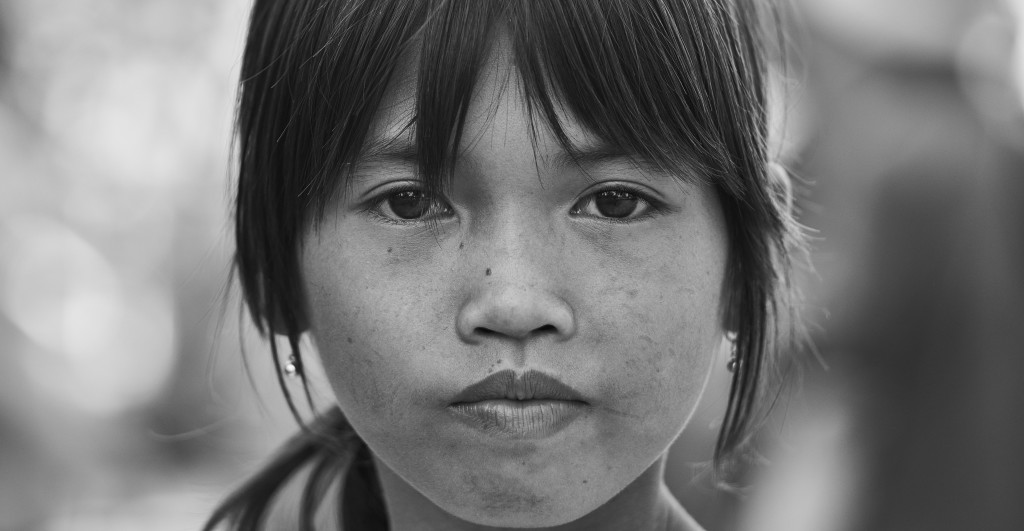This blog post is a part of the series, “CARED Perspectives,” developed by the APAGS Committee for the Advancement of Racial and Ethnic Diversity. This series will discuss current events and how these events relate to graduate students in psychology. If you are interested in contributing to the CARED Perspectives series, please contact Lincoln Hill.
“Therapy” and other Dirty Words: Addressing Cultural Stigma of Mental Illness in Diverse Communities
By Mary Odafe
Therapy (noun; /ˈTHerəpē/) – a luxury service associated with the White middle-to-upper class. Based on this conceptualization of therapy, “in-group” members (i.e., fellow members of one’s own ethnocultural community) who engage in formal therapy are, by default, guilty of making the decision to forego traditional methods of healing, including (but not limited to): a) seeking wisdom from a community leader or elder, b) engaging in fervent prayer, “letting go, letting God,” or seeking counsel from a church leader, c) “keeping it in the family” or speaking with a trusted friend, or d) engaging in traditional or indigenous medicinal/healing practices. An in-group member who attends therapy might experience real or perceived stigma from their fellow in-group members, and the associated fear of being labeled as one of the following:
- Crazy (adjective; /ˈkrāzē/) – A label frequently afforded to anyone with history of hospitalization or observable psychiatric symptoms. This term subsumes an array of symptoms associated with various clinical disorders including hallucinations, panic symptoms, obsessions and compulsions, delusions, cognitive distortions, etc.
- Bipolar (adjective; /bīˈpōlər/) and/or Schizophrenic (adjective; /ˌskit-sə-ˈfre-nik/) – Often used synonymously with ‘Crazy,’ a label afforded to anyone who exhibits odd or abnormal behavior, paranoia, or distinct changes in mood or personality. This label is not exclusively used among lay members of society, but is also frequently designated by clinicians, who have historically overutilized these diagnoses among certain ethnic minority groups.
- Depressed (adjective; /dəˈprest/) – A general succumbing to life’s stressors that signifies weakness or lack of faith, and manifests as sadness, laziness, irritability, and withdrawal from friends and family. Solution? ‘snap out of it’ or ‘pray it away.’
- Suicidal (adjective; /ˌso͞oəˈsīdl/) – Descriptive of when one fully succumbs to life stressors and reaches a state of indifference about life. Synonymous with ‘giving up,’ or in some instances, ‘Crazy,’ this label is used to describe individuals who have “failed” to cope with life and are now making the decision to sin against God and betray their friends and family by taking their own life.
While these pseudo-definitions and colloquialisms are jarring and overtly offensive, this is the painful reality of many individuals of diverse ethnic background whose in-group members (e.g., family, friends, ethnocultural community) subscribe to antiquated beliefs about mental illness. When facing stigma from one’s own community, people may be less likely to seek professional help that could prove beneficial when administered by a culturally-sensitive clinician. Internalized stigma may also serve to magnify the intensity of one’s psychological distress by adding significant feelings of shame and embarrassment. Unfortunately, subscribing to or acting in accordance with stigmatizing beliefs about mental illness only serves to perpetuate the stigma and limits opportunities to evolve. In cases when individuals do not seek necessary help due to perceived stigma, the consequences may even be deadly.
Ethnic minority psychologists are in a unique position to bring about meaningful change in our various cultural communities. As culturally-sensitive advocates, we can all encourage change in the following ways:
- It is first necessary to acknowledge the gravity of historical experiences with clinical research and services for marginalized ethnic groups (e.g., African Americans who were the unwitting subjects of inhumane research during the Tuskegee Syphilis Experiment from 1932-1972). At present, the challenge of effectively working with ethnic minority clients persists, as the large majority of evidence-based treatments were developed for use (and validated) with White middle-class Americans, failing to reflect growing trends of cultural diversity in the U.S. and Canada. In some cases, a healthy cultural paranoia in ethnic minority clients may be a reasonable response to unfamiliar techniques or practices. Aim for a more compassionate approach by working with thoughts of cultural mistrust, rather than combatting them.
- Incorporate traditional cultural or faith-based practices, rather than dismissing them as harmful or ineffective. In some instances, these cultural practices can even be used as a gateway to introducing mainstream psychology paradigms. For example, after observing that spirituality was the main source of emotional coping for my older African American Veteran clients, we utilized Biblical scriptures as a means to spark therapeutic group discussions about acceptance and change.
- Challenge cultural stigma by providing psychoeducation through simple conversation (at community forums, seminars, health fairs, church festivals, or just one-on-one with a friend or family member). Of particular importance is to ask questions just as often, if not more often, as you provide answers or information.
- Recognize that the underlying emotion that often motivates stigma is fear: fear of the unknown, fear of exploitation, fear of judgement from one’s community, or an internalized fear of being “broken.” Consistent with current trends in psychotherapy, fear is combatted through education and exposure. In addition to those listed previously, consider ways to provide education and also increase exposure to the idea of mental health – through conversation, modeling, social media, research, teaching, and clinical practice.
I encourage you to reflect and develop your own ideas for challenging the prevalence of stigma in diverse cultural communities. By changing the conversation surrounding mental illness, we work to combat stigma which could ultimately change a life, or save one.
Additional Resources:
- APA Multicultural Guidelines: An Ecological Approach to Context, Identity, and Intersectionality, 2017
- APAGS Multicultural Training Database
We want to hear what you think! Please share your thoughts on this topic in the comments section below.
Other posts in the CARED PERSPECTIVES series:


 In recent weeks, the global community has been flooded with images and information related to the U.S. immigration policy that requires the separation of children from their parents/caregivers at the border. This issue has undoubtedly impacted not only those directly affected, but millions of others who are disheartened by these events. As racial/ethnic minority graduate students, we are also not immune to the personal and professional effects of these events. Many of us have experienced a variety of emotions associated with the stories of children being separated from their caregivers. These experiences most certainly impact our ability to go about our daily lives, but they can also impact our professional work.
In recent weeks, the global community has been flooded with images and information related to the U.S. immigration policy that requires the separation of children from their parents/caregivers at the border. This issue has undoubtedly impacted not only those directly affected, but millions of others who are disheartened by these events. As racial/ethnic minority graduate students, we are also not immune to the personal and professional effects of these events. Many of us have experienced a variety of emotions associated with the stories of children being separated from their caregivers. These experiences most certainly impact our ability to go about our daily lives, but they can also impact our professional work. Psychology graduate students face unique struggles compared to graduate students in other fields, as we are expected to be self-reflective, engage in self-care, and also examine our ability to work with others while making sure that we dedicate most of our time to work. The balance often becomes a very tricky process to negotiate. International students in graduate psychology programs experience additional barriers in comparison to their domestic counterparts, as they have to navigate local and national policies, immigration requirements, paperwork, and experiences of discrimination, on top of academic requirements. Further, it is not unusual for international students to feel isolated, especially in smaller programs where the international student community is scarce. In addition to cultural adjustment and a possible language barrier, international students also have to plan a timeline carefully to ensure they are up to date on immigration documentation. One of the most stressful experiences for international students in clinical, counseling, and school psychology programs is applying for the clinical internship. International students face unique challenges in this process, including a reduced number of sites that accept individuals without US citizenship or permanent residency.
Psychology graduate students face unique struggles compared to graduate students in other fields, as we are expected to be self-reflective, engage in self-care, and also examine our ability to work with others while making sure that we dedicate most of our time to work. The balance often becomes a very tricky process to negotiate. International students in graduate psychology programs experience additional barriers in comparison to their domestic counterparts, as they have to navigate local and national policies, immigration requirements, paperwork, and experiences of discrimination, on top of academic requirements. Further, it is not unusual for international students to feel isolated, especially in smaller programs where the international student community is scarce. In addition to cultural adjustment and a possible language barrier, international students also have to plan a timeline carefully to ensure they are up to date on immigration documentation. One of the most stressful experiences for international students in clinical, counseling, and school psychology programs is applying for the clinical internship. International students face unique challenges in this process, including a reduced number of sites that accept individuals without US citizenship or permanent residency.